Thursday is the 102nd anniversary of the Battle of Jutland, and I'm reposting my series on the battle from last year.
Last time, we looked at the strategic situation leading up to the battle. 1916 saw the British Grand Fleet, under John Jellicoe, and the German High Seas Fleet under Reinhard Scheer, facing off across the North Sea. The British outnumbered the Germans, and had managed to cut Germany off from seaborne trade.
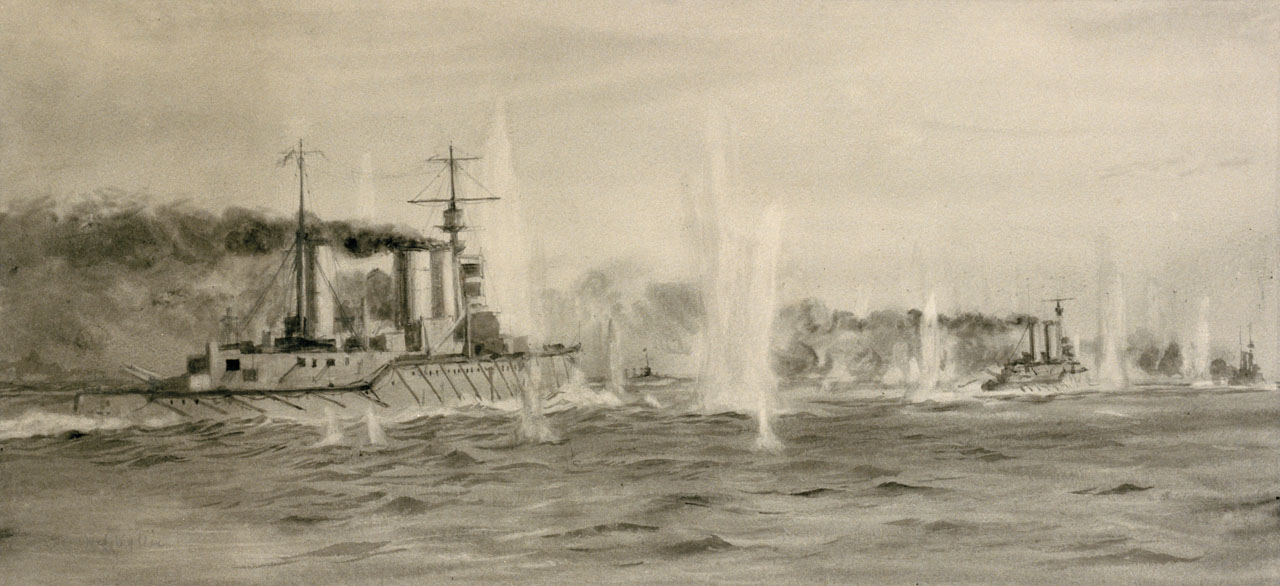
Jutland: Preliminaries to battle
Scheer planned the operation that led to Jutland as a trap for the British, a battlecruiser raid on the north coast of England to draw the British out past submarines stationed off their bases,1 with the main body of the High Seas Fleet waiting to pounce. Due to condenser problems and delays in repairs to the battlecruiser Seydlitz, the operation's planned start date of May 17th had to be pushed to the end of the month. The Germans had a force of zeppelins they used for reconnaissance, but high winds on May 28th prevented them from reaching their positions, and the plan was altered to a sweep into the Skagerrak, the area between Denmark and Norway. The British continued to trade with Norway, and this raid would have seriously disrupted that trade. The High Seas Fleet finally sailed shortly after midnight on May 31st.
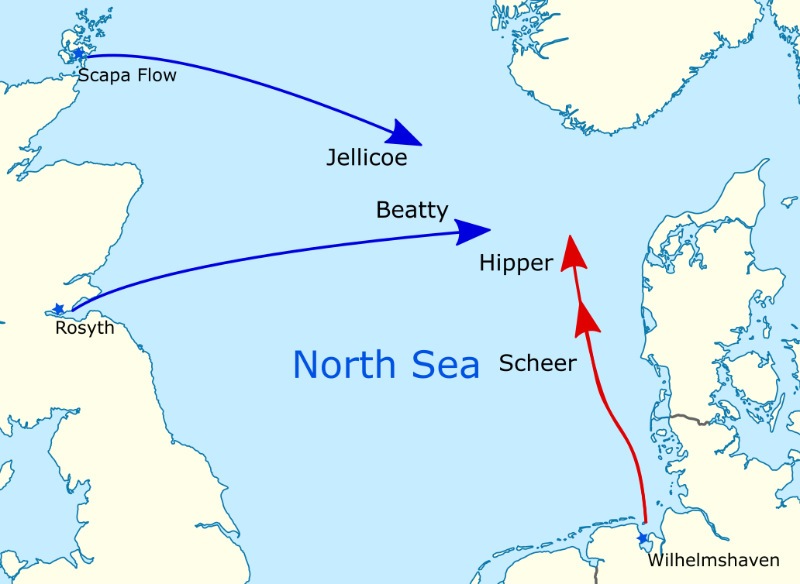
The situation from sailing to about 1400 on May 31st
The British had recovered several German codebooks early in the war, and set up an organization known as Room 40 to handle decryption and direction-finding. Room 40 was alerted on May 28th to the impending operation, and Jellicoe began his sortie three hours before Scheer. The U-boats off the British bases had not yet received word that the plan was being executed, and the British made it to sea without losses. However, Jellicoe was the victim of a miscommunication. The Admiralty asked Room 40 for the current location of callsign DK, which was used by Admiral Scheer while in port. Room 40 told them that it was in Wilhelmshaven, which was true. However, Scheer shifted to a different callsign while at sea. Room 40 knew this, but did not pass it on, due to either personal antipathy with the Admiralty’s messenger or a misunderstanding of the purpose of the question.
At 15203 on May 31st, the first British and German scouts, sweeping ahead of their respective battlecruiser forces, ran into each other while investigating a neutral Danish steamer to the southwest of the Skagerrak. Beatty was heading west, followed by Jellicoe, while Hipper led Scheer north by about 60 miles. At 1528, the British light cruisers Galatea and Phaeton fired the first shots of the greatest sea battle of the first World War.4
Jutland: The Run to the South
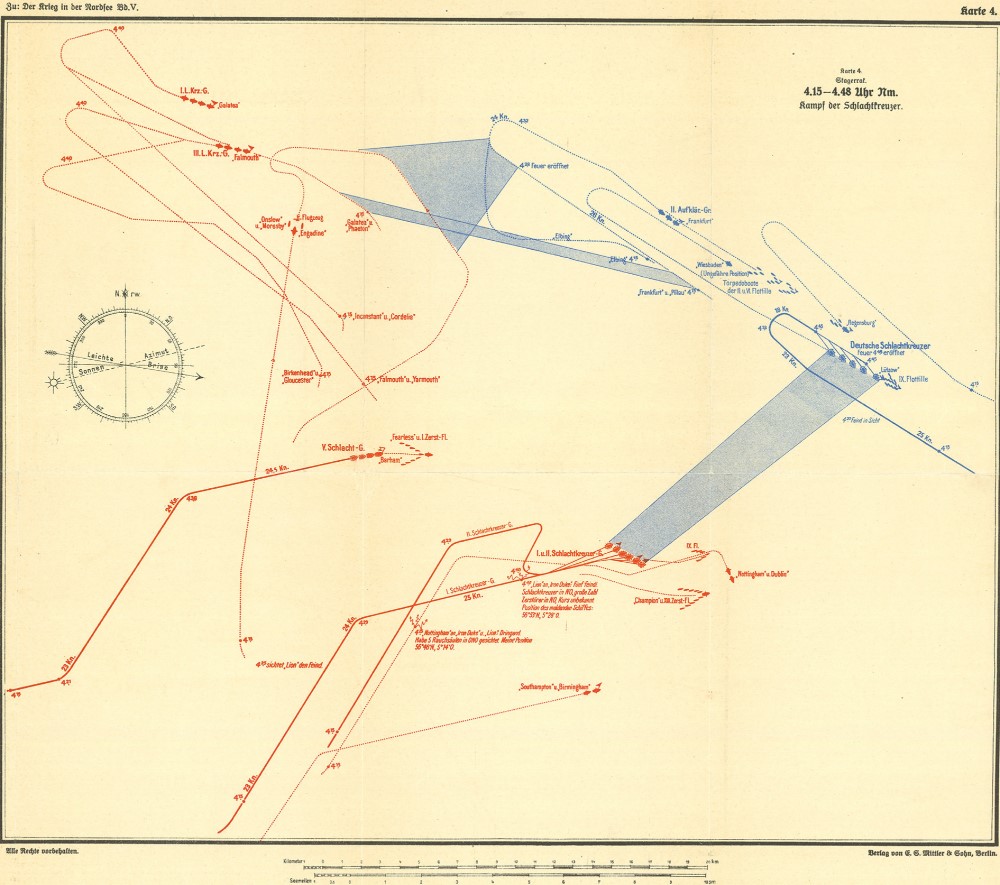
The two battlecruiser forces sighted each other at around 1630, and the Germans turned south, hoping to draw Beatty into the High Seas Fleet. Beatty followed, but a signaling lapse meant that the 5th Battle Squadron found themselves 10 miles behind Beatty.5 Beatty had a total of 32 13.5” guns and 16 12” guns, giving him a substantial range and firepower advantage over Hipper, who had only 16 12” and 28 11” weapons. However, he held off opening fire,6 and Hipper opened fire first, at 1648.
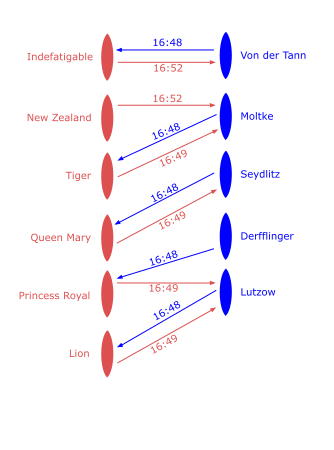
In fairness, the gunnery conditions greatly favored the Germans. The low sun backlit the British, and the wind blew their gun and funnel smoke into the line of fire. The German smoke was blown onto the disengaged side, where it merged with a natural cloud to produce a background that their ships blended against. The British opened fire 30 seconds later, on the orders of the captain of Lion, Beatty’s flagship. The first German salvos were incredibly accurate, Seydlitz’s first shells falling just 300 yrds short of Princess Royal. Tiger was hit twice by Moltke minutes later, although neither was critical, but a third hit 3 minutes later took the sighting hood off of Q turret.
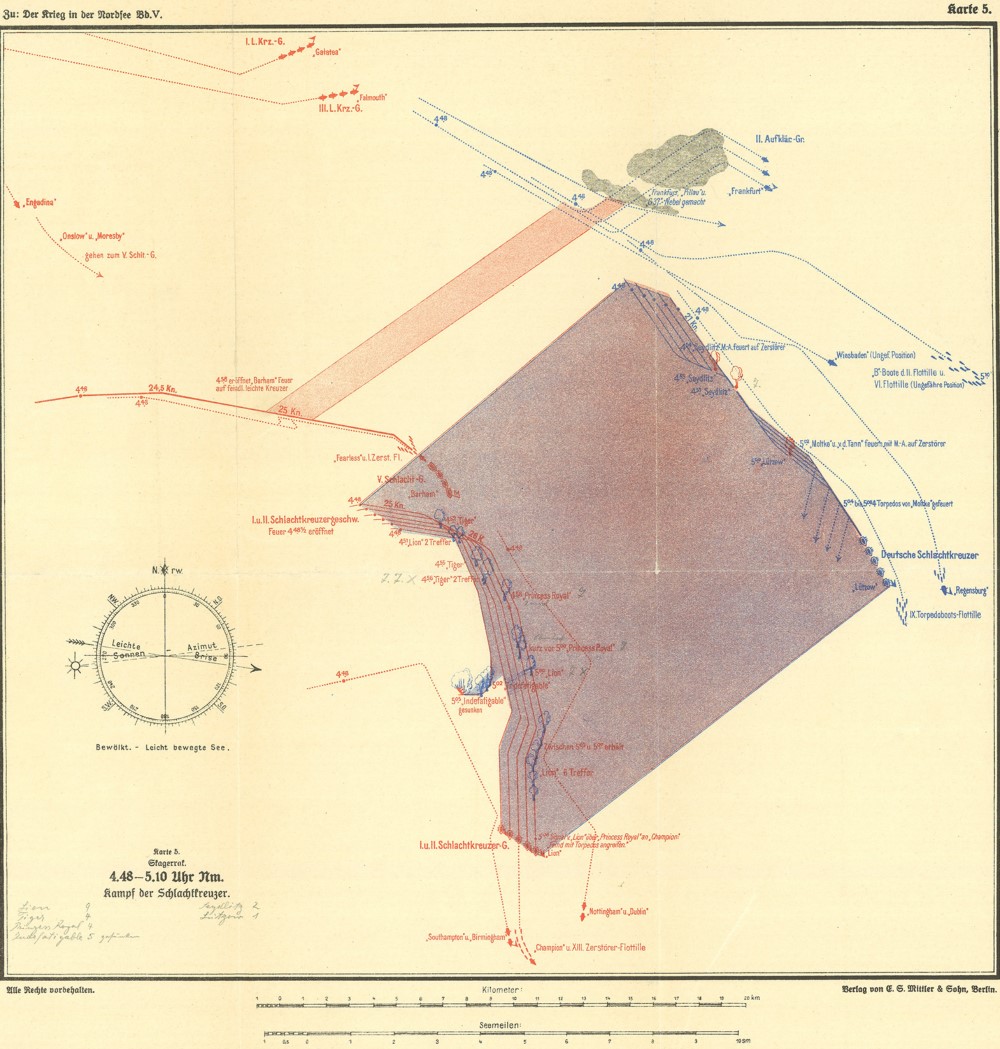
The British gunnery did not start as well. In theory, they should have had a major advantage, as one of their ships should have been unengaged, and near-misses are a serious hindrance to gunnery. Beatty’s plan was that each ship should engage its opposite number in the German line, starting from the rear, while Lion also engaged Lutzow. Instead, Queen Mary engaged Seydlitz, while Tiger joined New Zealand in firing against Moltke, leaving Derfflinger unengaged for almost 10 minutes. This might have been excusable, had not the same thing happened at Dogger Bank a year and a half earlier.
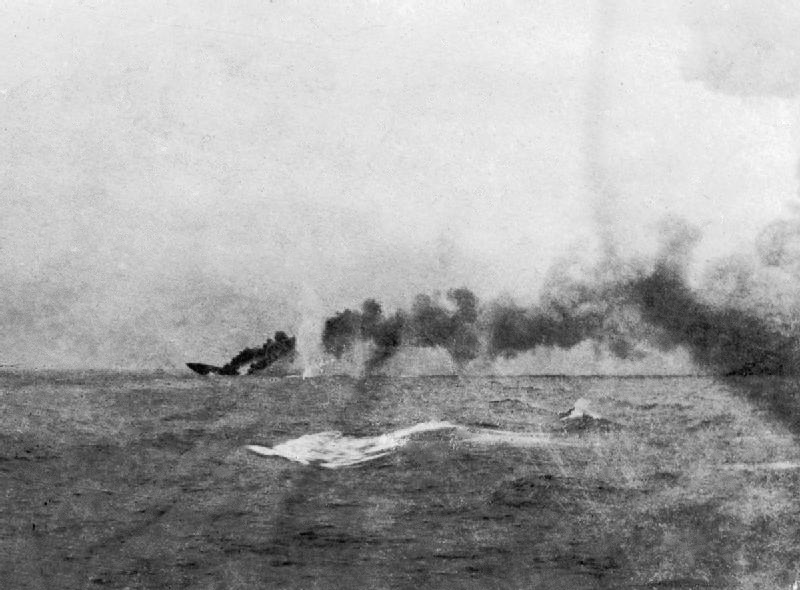
Indefatigable sinking
By the time Queen Mary landed the first British hit at 1655, the Germans had made at least 10. At 1657, Beatty ordered a change of course to open the range, at the same time as Queen Mary made the first serious hit on the Germans, knocking out Seydlitz’s aft superfiring turret. At 1700, Lion took another hit, this one opening the roof of Q turret, and it was only the caution of the Gunner, Alexander Grant, that prevented Lion sharing the fate that took Indefatigable two minutes later.7 A hit on the latter ship's A turret set off the cordite that was coming up from the magazines, and within 30 seconds, the magazines exploded, taking all but two of her 1,017 officers and men with her.
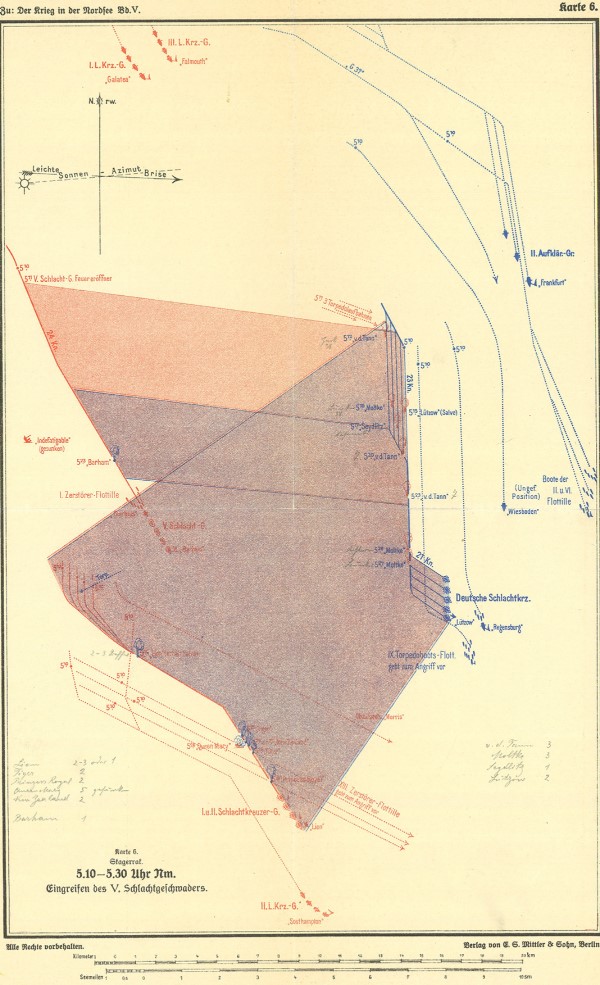
The two fleets were drawing apart, but Evan-Thomas had finally caught up, and his ships opened fire on the rear of the German line. At 1709, Barham landed a hit on Von der Tann, admitting 600 tons of water, and nearly disabling her steering gear. More hits put two turrets out of action, and Moltke was also hit. The battlecruisers also began to strike back after a dismal record in the first 20 minutes of the action.
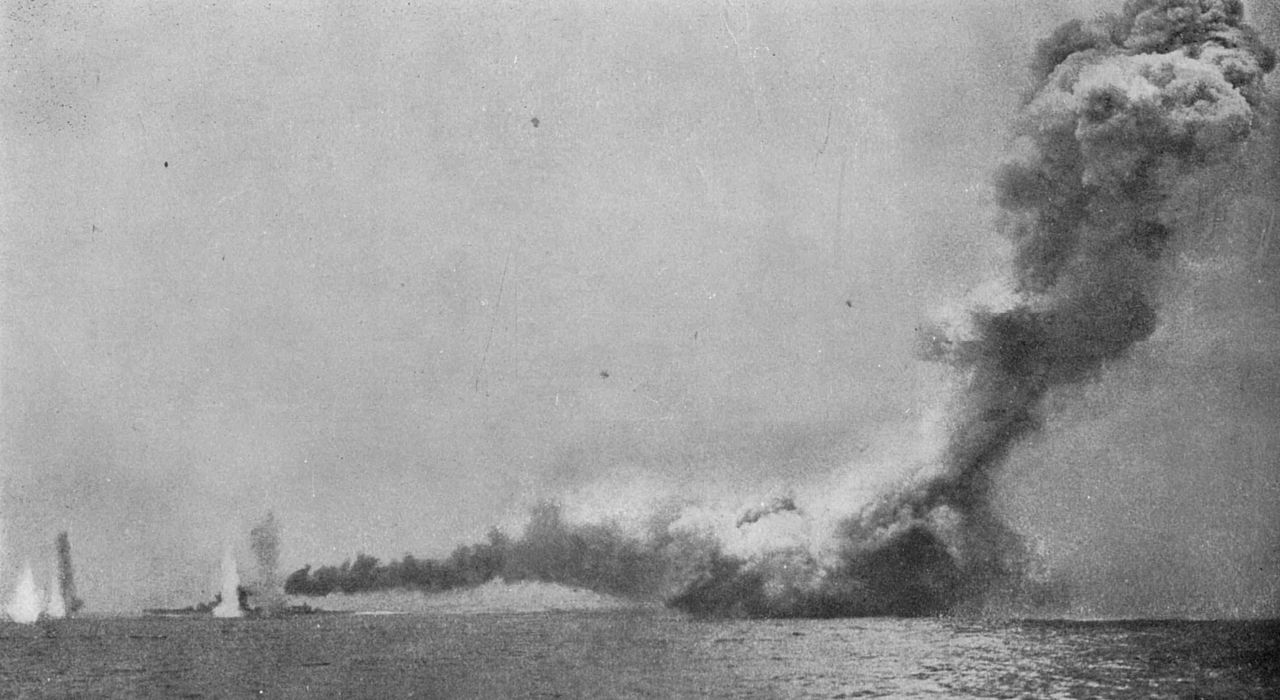
HMS Lion on the left steams past HMS Queen Mary as she explodes
However, at 1725, Queen Mary suffered a turret hit, which sent her down in the same manner as Indefatigable. A total of 1,258 men were lost, with only 8 survivors. Shortly thereafter, Beatty turned to Lion’s captain and famously said “There seems to be something wrong with our bloody ships today”.
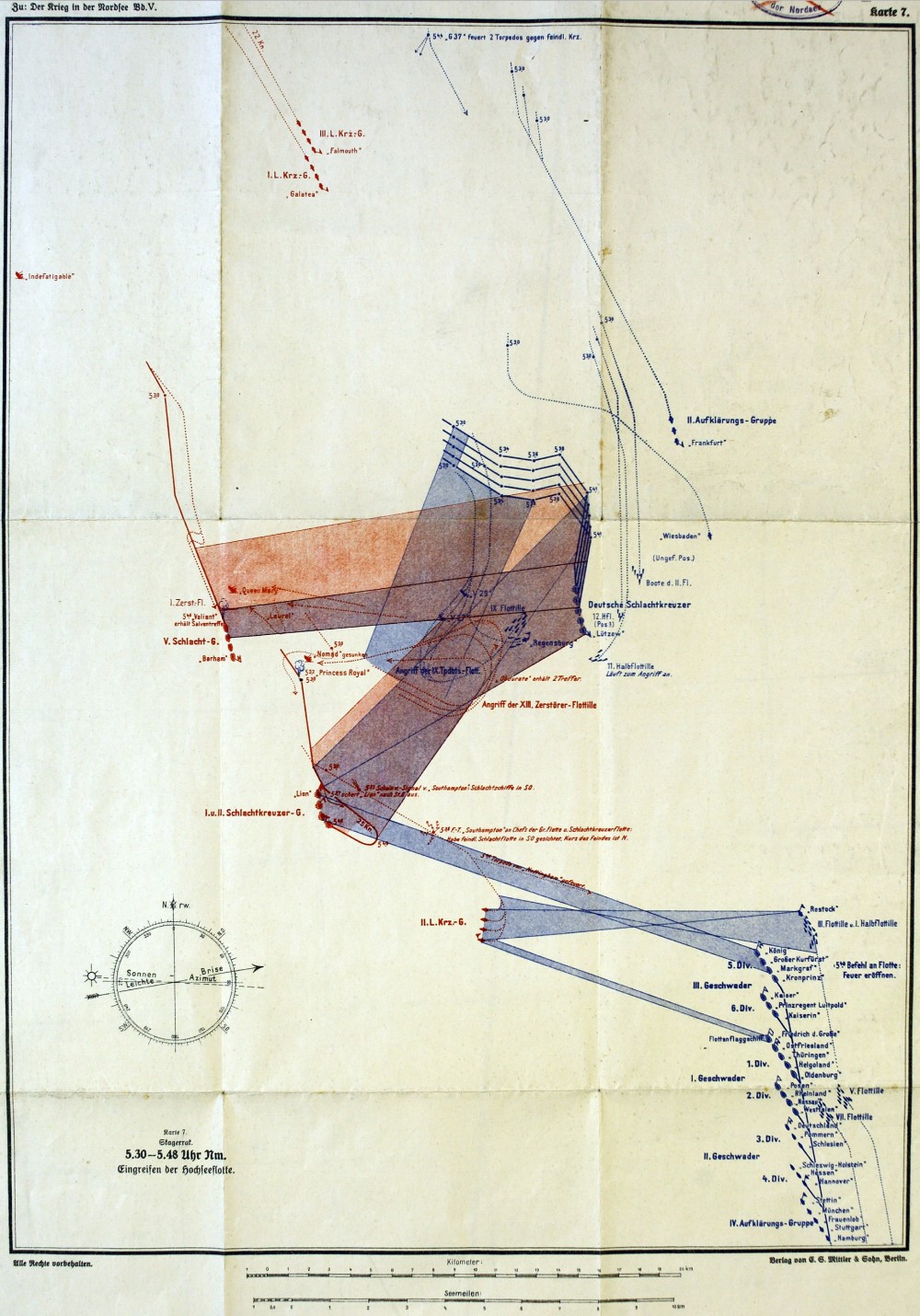
Ten minutes later, the British cruiser HMS Southampton, flagship of Commodore William Goodenough, first saw the High Seas Fleet. Goodenough continued south, attempting to gain as much information as he could. He closed to within 13,000 yards, although the Germans did not fire until Southampton turned north again, probably because they assumed her to be one of their ships. Even more astonishingly, Southampton was not hit during her escape, despite an estimated 60 shells falling within 100 yards of the ship.
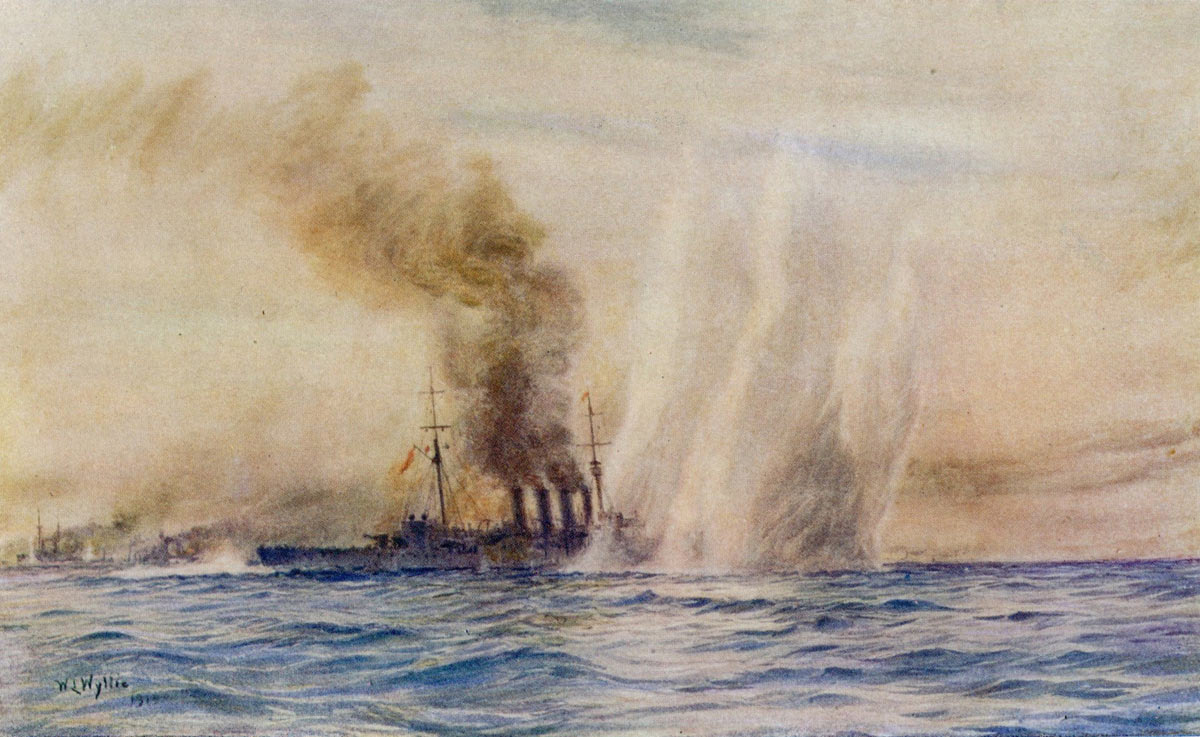
Southhampton under fire
At 1738, Goodenough signaled his sightings, totally surprising Beatty and Jellicoe, who had been told that the body of the High Seas Fleet was still in port. At 1740, Beatty ordered his force to turn north, bringing the run to the south to an end. When he turned, the Germans had scored 42 hits on the battlecruisers and 2 on Barham. They had taken only 11 hits from the battlecruisers, and 6 from the 5th Battle Squadron, and to make matters worse for the British, their shells often failed to penetrate when they did hit. However, due to another signaling failure, Evan-Thomas continued south, passing Beatty 10 minutes later. At 1755, he finally followed Beatty north, under fire from the lead elements of the High Seas Fleet. Although under orders for all ships to turn in the same place, Malaya, in the rear of the 5th BS, turned early, to avid the concentration of fire the Germans were pouring at the spot where the other three ships had turned.
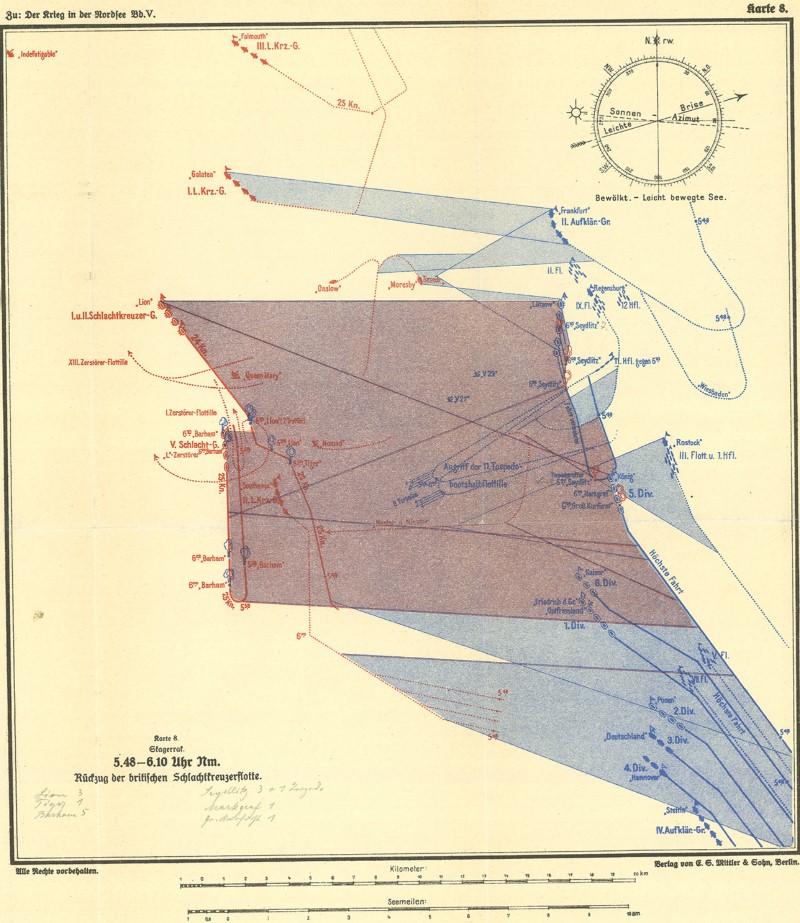
The only battlecruiser that came through the action undamaged was HMS New Zealand, which took only one hit, and suffered no casualties. She had been paid for by the government of New Zealand, and the Maori had told her captain that so long as he wore a Maori grass skirt and pendant, she would not be harmed in battle. Unfortunately, there are no pictures of the resulting outfit (which he wore over his uniform), but it appears to have worked, as she took no casualties during the entire war.
Next time, we’ll cover the Run to the North and the first meeting of the fleets.
1 These submarines had been freed up to support the High Seas Fleet by the recent termination of unrestricted submarine warfare under American diplomatic pressure. ⇑
2 I've used the German trackcharts from Groos, sourced from Nicholas Jellicoe's website. The British equivalents are of much larger slices of time, which makes them harder to understand. The only important German words to know are schlacht (battle) and geschwader (squadron). ⇑
3 GMT+1, which I've used throughout. The Germans and British used different time zones, which occasionally mangles reporting, so I've standardized on the German times, to match their trackcharts. The original versions of these posts used GMT. ⇑
4 A few minutes later, Beatty ordered his seaplane carrier Engadine to fly off a scouting plane. While the plane spotted the Germans, the information didn't get back to Beatty. However, it was the first use of sea-based aircraft in a naval battle. ⇑
5 This was not the first time that Beatty had signalling problems, nor was it the last. His failure to take action to fix this is rather damning. ⇑
6 This was an odd choice, considering the doctrine he advocated. ⇑

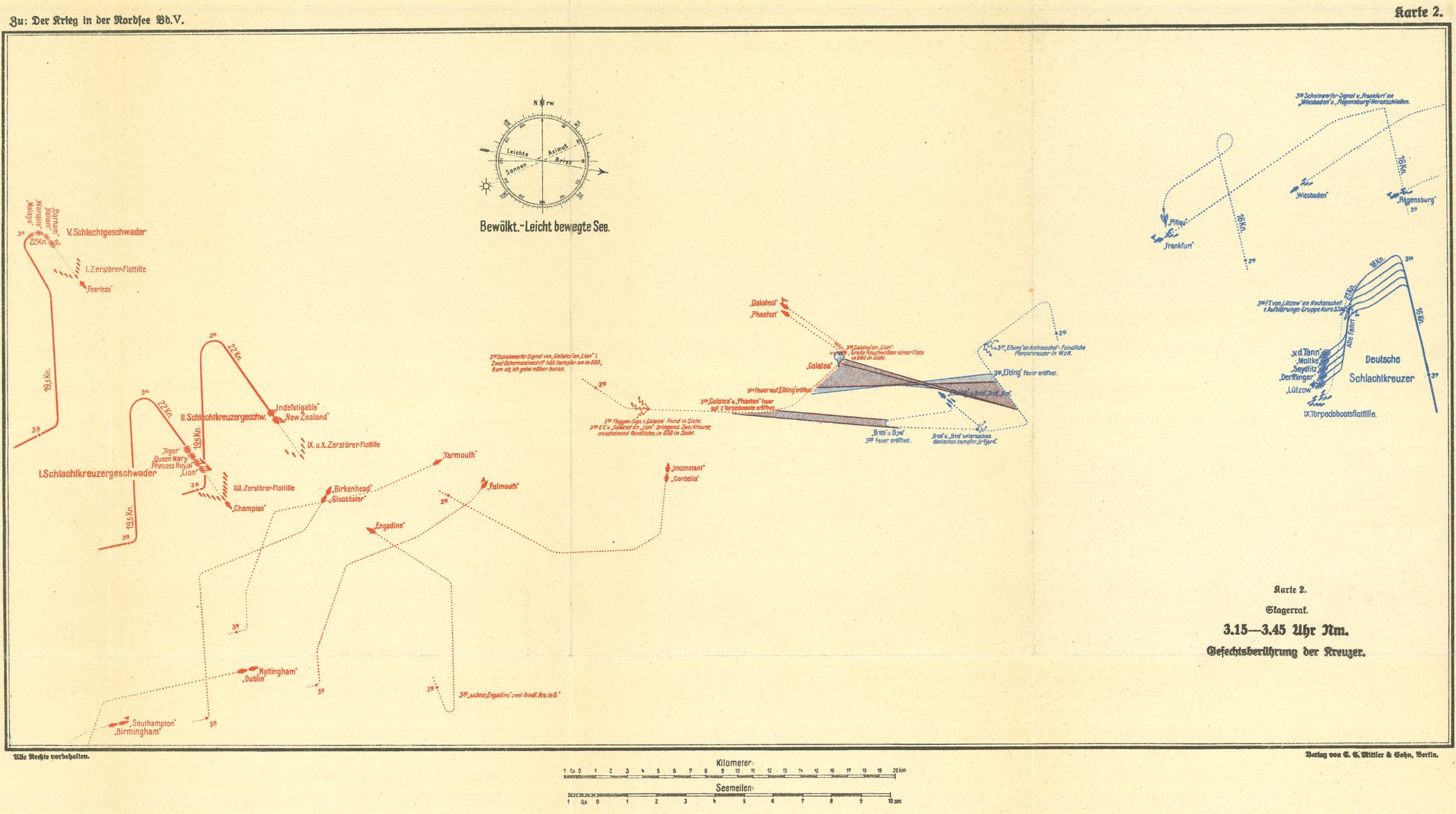
Recent Comments